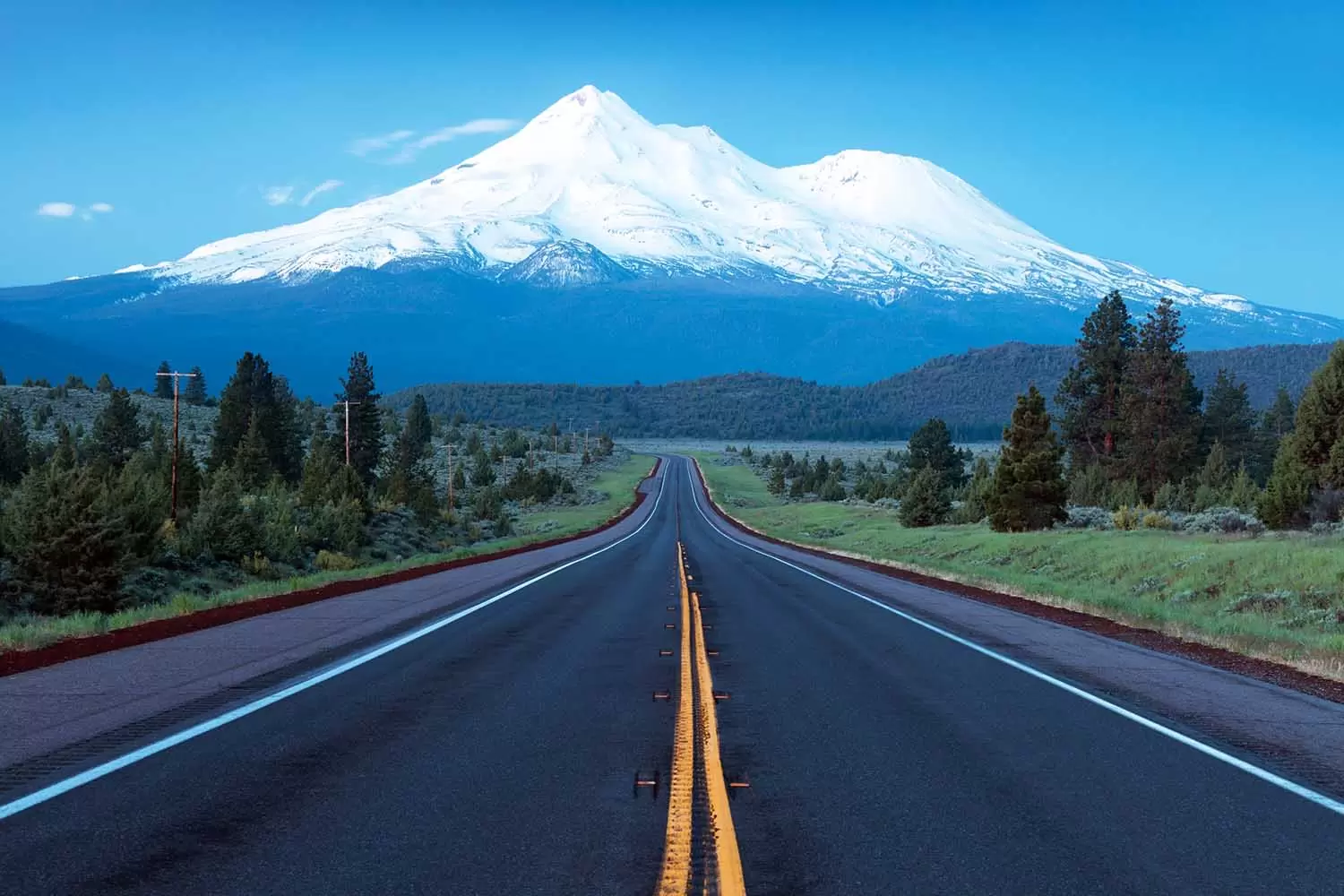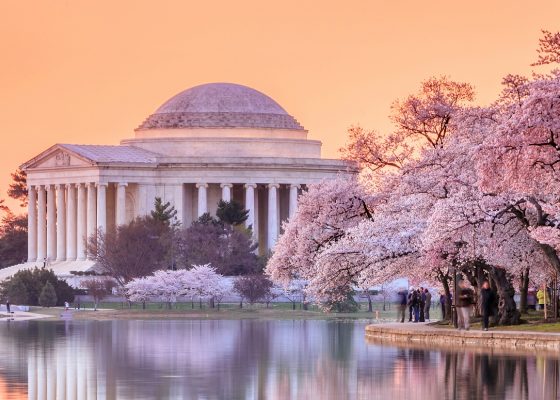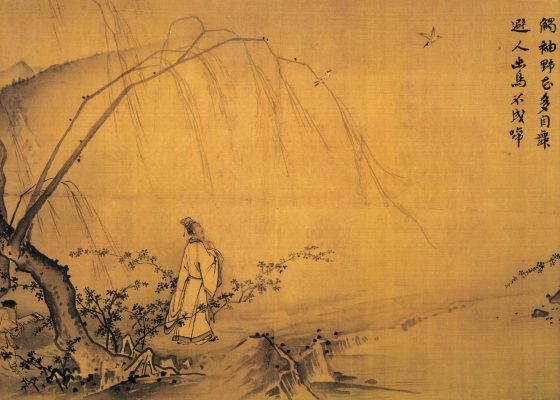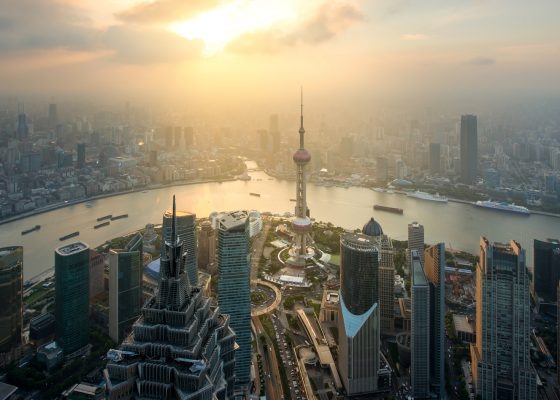
By Zhihui Zou
What is better than a trip after the difficult years of the pandemic? Traveling to take on a new adventure, to discover mountains or grasslands you have never seen before; some return to the same cottage in a pristine forest; some travel to see old friends in that old little town. Regardless of where you go, we always travel for relaxation, rediscovery, and renewal of our mind and body.
There are some unique spots around the world that provide more than a simple escape. These places not only provide natural sceneries that we do not experience in a crowded city, but also heal us—through the magic of Mother Earth.
Here are some of those spots. Every one of them provides an irreplaceable ecosystem for you to refresh, restore, and heal from stress and anxiety.
Cape Reinga, New Zealand
Standing at Cape Reinga, the northern tip of New Zealand’s North Island, one gets to watch the Tasman Sea meet the vast Pacific Ocean. Besides having a great view of the ocean that stretches to the horizon, Cape Reinga is also a sacred place for the Maori people. According to oral history, Cape Reinga is where the spirits of the deceased enter the afterlife. A gnarled pohutukawa tree stands by the coast, overlooking the ocean. Some say that this tree is more than 800 years old, and is the tree that the spirits of the deceased climb first before leaping into the afterlife.
[ihc-hide-content ihc_mb_type=”block” ihc_mb_who=”unreg” ihc_mb_template=”4″ ]
Uluru / Ayers Rock, Australia
This is a majestic sandstone formation that stands 348 meters (1,142 feet) high, with a perimeter of 9.4 kilometers (5.8 miles), and is more than 500 million years old. The image that many picture when hearing its name is its distinct red coloration. The nearest large town is more than 300 kilometers (around 200 miles) away. But Uluru is far from alone. Just about 25 kilometers (16 miles) away is the Kata Tjuta rock formation, formed almost simultaneously with Uluru.
Uluru is sacred to the Aṉangu, the Aboriginal Australian people of the area. To them, Uluru is more than just a rock. It is the resting place of ancestral spirits. According to the local Aboriginal tales, Uluru was formed during Dreaming—the beginning of time. Currently, climbing Uluru is banned out of respect for its rich cultural history, and to protect the stone.
The Dead Sea, Jordan and Israel
The Dead Sea is the lowest body of water on Earth, with a surface elevation of -430.5 meters (-1,412 feet). It borders Israel and Jordan and is referred to in the Bible as the “sea of salt.” Because of the Dead Sea’s high salt concentration (a salinity of around 35% and a density of 1.24 kg/L), a person can relax and float on the surface of the water with no fear of drowning. People tell tales of how the water in the Dead Sea can heal skin issues like psoriasis and even cure other health issues like asthma and arthritis. When floating on the Dead Sea, you also get to enjoy the mountains that make up the surrounding Jordan Valley, as if the Dead Sea was specially created as a special location secluded from the noise of the outside world.
Mount Shasta, California, United States
A stratovolcano does sound powerful, and its power, to many people, exhibits in the form of healing. Located in Siskiyou County in Northern California, this snow-covered mountain has been the destination for many spirit seekers for years. Camps are set up in the surrounding national forest, and the water nearby is considered the cleanest water in all California.
Mount Shasta is a common location in many Native American stories, considering there are territories of the Shasta, Wintu, Achumawi, Atsugewi, and Modoc around. There are ancient and modern myths about Mount Shasta. In some Native American stories, this is where their people began. According to some more modern tales, there is even a secret city hidden beneath the volcano’s peak. Regardless of how the stories go, this is a place that makes you feel reborn again when leaving.
Camino de Santiago, France and Spain
Also known as the Way of St. James, this route is part of ancient pilgrim routes that led people throughout Europe to the tomb of St. James in Spain. The most famous route is the one starting from St. Jean-Pied-du-Port, France and extends about 780 kilometers (about 500 miles) to Spain. People today continue to complete this journey on foot. They cross grasslands, hills, and even coasts. This route might not have as many steep slopes as one sees in mountains, but Camino de Santiago is a tour through nature, allowing one to refresh in the energy of many beautiful sceneries.
Blue Lagoon, Iceland
Here is one of Iceland’s most attractive warm waters. The lagoon’s geothermal water does not only exhibit a soothing light blue color, but is also rich in minerals, from salt to silica. Soft, white, silica-rich mud forms naturally and, when applied to your skin, relieves your body and refreshes your spirit. The warm water will gently let your stress or worries seep away. After healing in the lagoon, well-decorated restaurants nearby overlook the signature blue water, allowing people to enjoy their meals while surrounded by views of the lagoon.
Table Mountain, South Africa
Overlooking the entirety of Cape Town and the coast, Table Mountain heals its visitors from up high. It got its name from its iconic flat mountain top, and standing on top of it, you can truly feel the vastness and beauty of nature. There are two ways to reach the top: hiking, or taking the cableway, and each has a unique experience to offer.
Ubud, Indonesia
Ubud is a town in Bali, Indonesia that blends history with forest. Bali is nicknamed “island of Gods,” and this is not an overstatement. Temples hide amongst the trees, and you can visit the Puri Saren Agung, or the Ubud Royal Palace, that is well-maintained by the heirs of the royal family. Animal lovers might want to visit the Ubud Monkey Forest, home to around 700 long-tail macaques. Those wanting to stretch their legs on a hike will enjoy a walk down Campuhan Ridge Walk, which takes visitors through the traditional livelihoods of the people in Ubud. Not only does Ubud offer quiet scenery, the local cuisine lets visitors taste the history and culture of this island, and artists or yoga enthusiasts will find their retreat among the temples and trees.
Machu Picchu, Peru
Originally a fortified royal estate of the Inca Empire, the stone temples and shrines of Machu Picchu are deeply secluded in the Andes Mountains. Looking out in all four directions, you can only see the waves of mountains and trees that seem to stretch out indefinitely. To reach Machu Picchu, you can take the Inca Trail, which connects the historical site with the city of Cusco, a city with rich history in itself as well. The trail goes through all kinds of Andean environments, such as cloud forests and alpine tundras, not to mention the Inca ruins along the sides.
[/ihc-hide-content]











Cancel anytime


Using our website
You may use the The Middle Land website subject to the Terms and Conditions set out on this page. Visit this page regularly to check the latest Terms and Conditions. Access and use of this site constitutes your acceptance of the Terms and Conditions in-force at the time of use.
Intellectual property
Names, images and logos displayed on this site that identify The Middle Land are the intellectual property of New San Cai Inc. Copying any of this material is not permitted without prior written approval from the owner of the relevant intellectual property rights.
Requests for such approval should be directed to the competition committee.
Please provide details of your intended use of the relevant material and include your contact details including name, address, telephone number, fax number and email.
Linking policy
You do not have to ask permission to link directly to pages hosted on this website. However, we do not permit our pages to be loaded directly into frames on your website. Our pages must load into the user’s entire window.
The Middle Land is not responsible for the contents or reliability of any site to which it is hyperlinked and does not necessarily endorse the views expressed within them. Linking to or from this site should not be taken as endorsement of any kind. We cannot guarantee that these links will work all the time and have no control over the availability of the linked pages.
Submissions
All information, data, text, graphics or any other materials whatsoever uploaded or transmitted by you is your sole responsibility. This means that you are entirely responsible for all content you upload, post, email or otherwise transmit to the The Middle Land website.
Virus protection
We make every effort to check and test material at all stages of production. It is always recommended to run an anti-virus program on all material downloaded from the Internet. We cannot accept any responsibility for any loss, disruption or damage to your data or computer system, which may occur while using material derived from this website.
Disclaimer
The website is provided ‘as is’, without any representation or endorsement made, and without warranty of any kind whether express or implied.
Your use of any information or materials on this website is entirely at your own risk, for which we shall not be liable. It is your responsibility to ensure any products, services or information available through this website meet your specific requirements.
We do not warrant the operation of this site will be uninterrupted or error free, that defects will be corrected, or that this site or the server that makes it available are free of viruses or represent the full functionality, accuracy and reliability of the materials. In no event will we be liable for any loss or damage including, without limitation, loss of profits, indirect or consequential loss or damage, or any loss or damages whatsoever arising from the use, or loss of data, arising out of – or in connection with – the use of this website.
Last Updated: September 11, 2024
New San Cai Inc. (hereinafter “The Middle Land,” “we,” “us,” or “our”) owns and operates www.themiddleland.com, its affiliated websites and applications (our “Sites”), and provides related products, services, newsletters, and other offerings (together with the Sites, our “Services”) to art lovers and visitors around the world.
This Privacy Policy (the “Policy”) is intended to provide you with information on how we collect, use, and share your personal data. We process personal data from visitors of our Sites, users of our Services, readers or bloggers (collectively, “you” or “your”). Personal data is any information about you. This Policy also describes your choices regarding use, access, and correction of your personal information.
If after reading this Policy you have additional questions or would like further information, please email at middleland@protonmail.com.
PERSONAL DATA WE COLLECT AND HOW WE USE IT
We collect and process personal data only for lawful reasons, such as our legitimate business interests, your consent, or to fulfill our legal or contractual obligations.
Information You Provide to Us
Most of the information Join Talents collects is provided by you voluntarily while using our Services. We do not request highly sensitive data, such as health or medical information, racial or ethnic origin, political opinions, religious or philosophical beliefs, trade union membership, etc. and we ask that you refrain from sending us any such information.
Here are the types of personal data that you voluntarily provide to us:
As a registered users or customers, you may ask us to review or retrieve emails sent to your business. We will access these emails to provide these services for you.
We use the personal data you provide to us for the following business purposes:
Information Obtained from Third-Party Sources
We collect and publish biographical and other information about users, which we use to promote the articles and our bloggers who use our sites. If you provide personal information about others, or if others give us your information, we will only use that information for the specific reason for which it was provided.
Information We Collect by Automated Means
Log Files
The site uses your IP address to help diagnose server problems, and to administer our website. We use your IP addresses to analyze trends and gather broad demographic information for aggregate use.
Every time you access our Site, some data is temporarily stored and processed in a log file, such as your IP addresses, the browser types, the operating systems, the recalled page, or the date and time of the recall. This data is only evaluated for statistical purposes, such as to help us diagnose problems with our servers, to administer our sites, or to improve our Services.
Do Not Track
Your browser or device may include “Do Not Track” functionality. Our information collection and disclosure practices, and the choices that we provide to customers, will continue to operate as described in this Privacy Policy, whether or not a “Do Not Track” signal is received.
HOW WE SHARE YOUR INFORMATION
We may share your personal data with third parties only in the ways that are described in this Privacy Policy. We do not sell, rent, or lease your personal data to third parties, and We does not transfer your personal data to third parties for their direct marketing purposes.
We may share your personal data with third parties as follows:
There may be other instances where we share your personal data with third parties based on your consent.
HOW WE STORE AND SECURE YOUR INFORMATION
We retain your information for as long as your account is active or as needed to provide you Services. If you wish to cancel your account, please contact us middleland@protonmail.com. We will retain and use your personal data as necessary to comply with legal obligations, resolve disputes, and enforce our agreements.
All you and our data are stored in the server in the United States, we do not sales or transfer your personal data to the third party. All information you provide is stored on a secure server, and we generally accepted industry standards to protect the personal data we process both during transmission and once received.
YOUR RIGHTS/OPT OUT
You may correct, update, amend, delete/remove, or deactivate your account and personal data by making the change on your Blog on www.themiddleland.com or by emailing middleland@protonmail.com. We will respond to your request within a reasonable timeframe.
You may choose to stop receiving Join Talents newsletters or marketing emails at any time by following the unsubscribe instructions included in those communications, or you can email us at middleland@protonmail.com
LINKS TO OTHER WEBSITES
The Middle Land include links to other websites whose privacy practices may differ from that of ours. If you submit personal data to any of those sites, your information is governed by their privacy statements. We encourage you to carefully read the Privacy Policy of any website you visit.
NOTE TO PARENTS OR GUARDIANS
Our Services are not intended for use by children, and we do not knowingly or intentionally solicit data from or market to children under the age of 18. We reserve the right to delete the child’s information and the child’s registration on the Sites.
PRIVACY POLICY CHANGES
We may update this Privacy Policy to reflect changes to our personal data processing practices. If any material changes are made, we will notify you on the Sites prior to the change becoming effective. You are encouraged to periodically review this Policy.
HOW TO CONTACT US
If you have any questions about our Privacy Policy, please email middleland@protonmail.com
The Michelin brothers created the guide, which included information like maps, car mechanics listings, hotels and petrol stations across France to spur demand.
The guide began to award stars to fine dining restaurants in 1926.
At first, they offered just one star, the concept was expanded in 1931 to include one, two and three stars. One star establishments represent a “very good restaurant in its category”. Two honour “excellent cooking, worth a detour” and three reward “exceptional cuisine, worth a
Thank you for your participation,
please Log in or Sign up to Vote

123Sign in to your account